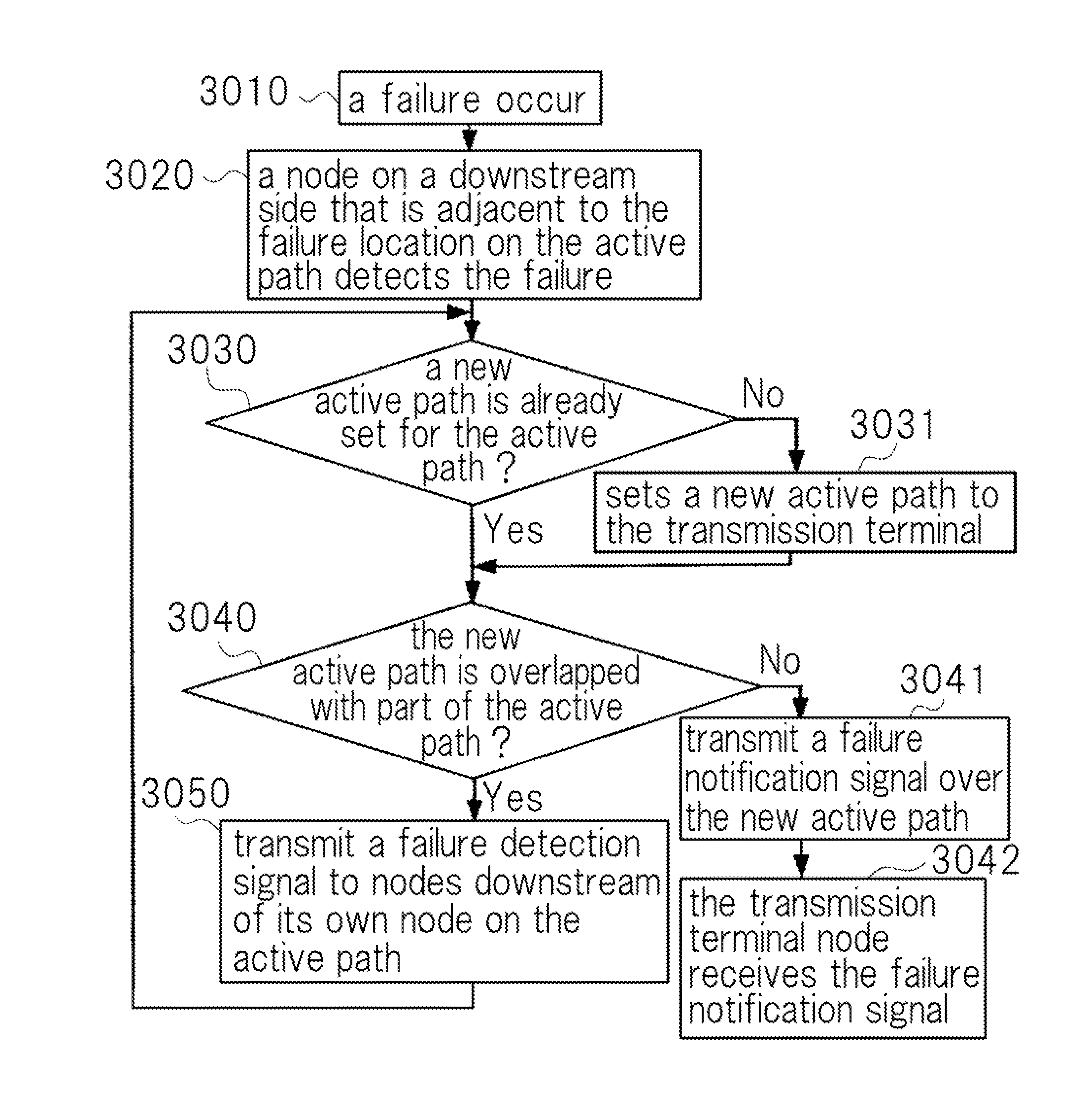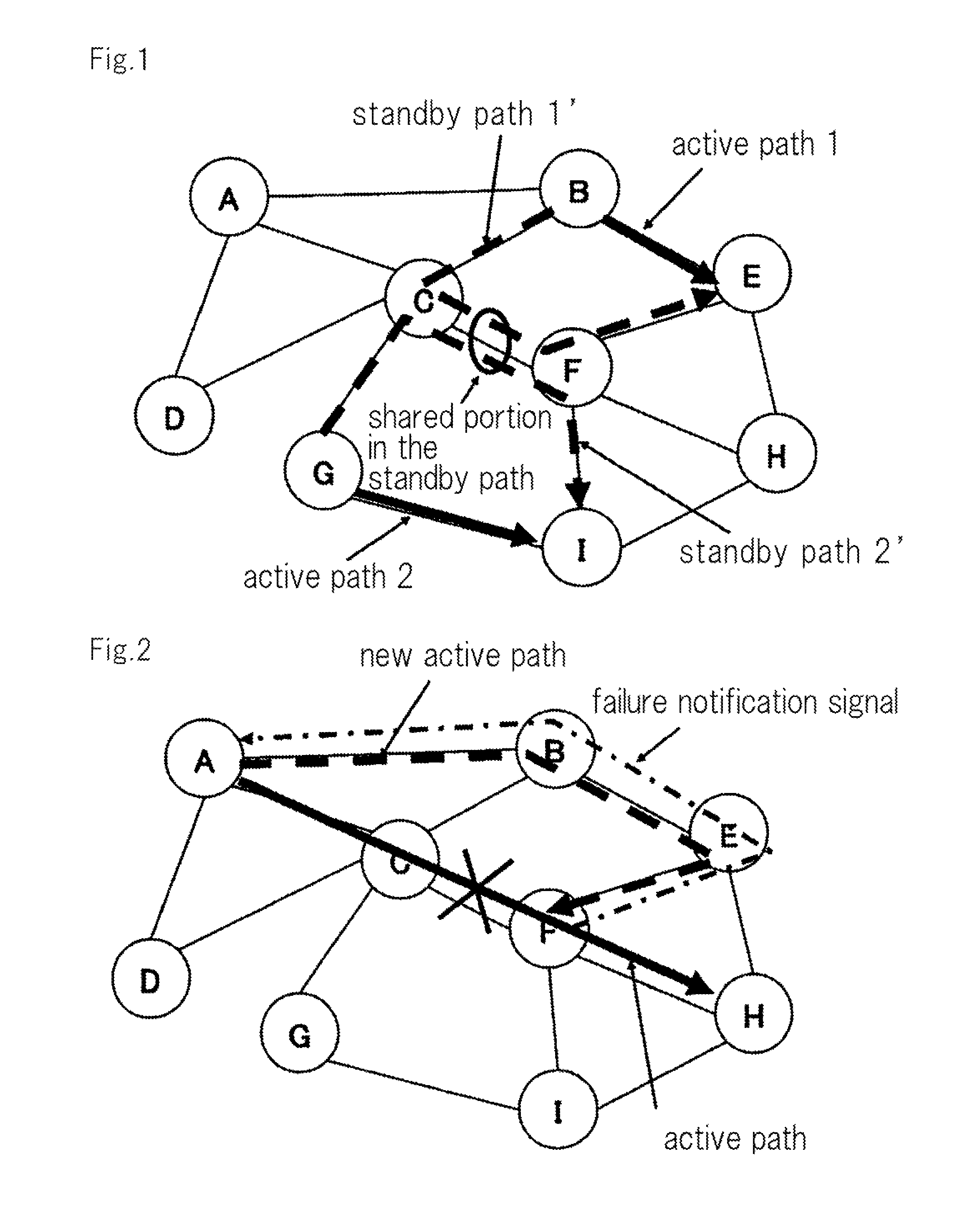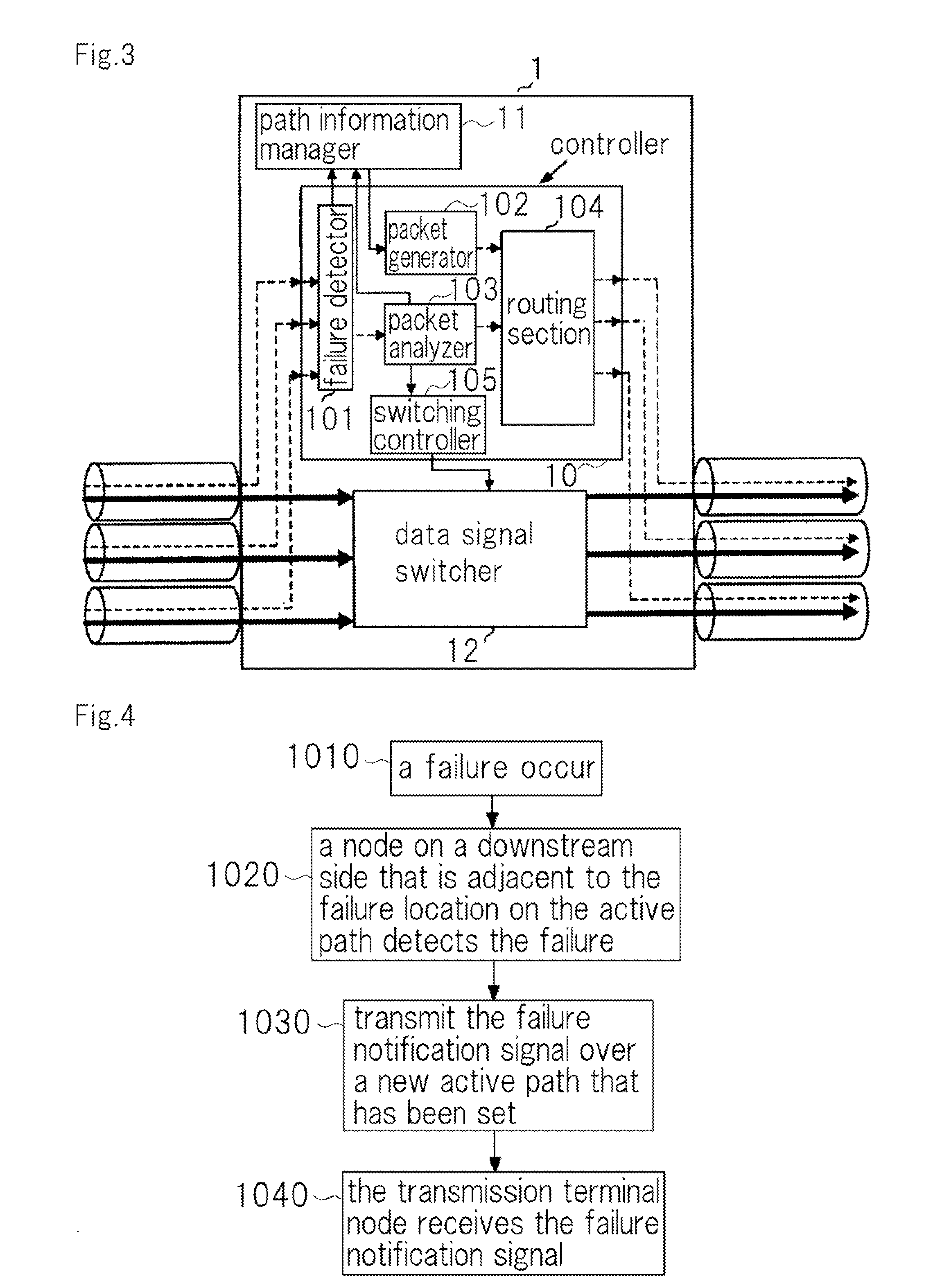Communication system, node device, communication method in the communication system, and program
a communication system and node technology, applied in the field of communication systems, can solve the problems that failure recovery cannot be performed at a high speed, and achieve the effect of high speed, accurate number of hops, and high speed
- Summary
- Abstract
- Description
- Claims
- Application Information
AI Technical Summary
Benefits of technology
Problems solved by technology
Method used
Image
Examples
first exemplary embodiment
(First Exemplary Embodiment)
[0076]FIG. 2 is a view that illustrates an example of a network. There exist nodes A to I in this network, and a plurality of links are connected to each node.
[0077]Data transmission is usually performed on an active path indicated by a thick line in FIG. 1. However, when a failure, such as a link disconnection or a node failure, occurs on the active path, data transmission is performed via a new active path indicated by a dotted line in FIG. 1. In addition to data signals that are used for data transmission on the active path or new active path, there are control signals such as failure notification signals that are used for controlling each node. The signals are transmitted using different channels. Herein, the signals are transmitted using the same channel on the active path and the new active path. In this connection, FIG. 2 illustrates a case in which a failure occurred between nodes C and F.
[0078]FIG. 3 is a block diagram that illustrates the config...
second exemplary embodiment
(Second Exemplary Embodiment)
[0098]Operations when a node on a new active path receives a failure notification signal will now be described in detail. Note that the configuration of the present exemplary embodiment is the same as that of the first exemplary embodiment.
[0099]FIG. 8 is a flowchart that illustrates an example of operations when a node on a new active path has received a failure notification signal.
[0100]When a node on a new active path receives a failure notification signal at step 2010, packet analyzer 103 analyzes the packet for the failure notification signal, and recognizes that the packet is for a failure notification signal at step 2020. At the same time, packet analyzer 103 recognizes the input port and output port in the packet. Next, at step 2030, packet analyzer 103 sets the input port and output port of data signal switcher 12 in the direction opposite to the transmission direction of the control packet through switching controller 105.
[0101]FIG. 9 illustrat...
third exemplary embodiment
(Third Exemplary Embodiment)
[0109]When setting a new active path from a node that detected a failure of a node adjacent thereto, there is a possibility that part of the new active path will overlap with the active path, as illustrated in FIG. 11. Therefore, according to the present exemplary embodiment, from the viewpoint of effective band utilization, setting of a new active path is performed such that paths do not overlap. Note that the configuration of the present exemplary embodiment is the same as that of the first exemplary embodiment.
[0110]FIG. 12 is a flowchart in the third exemplary embodiment that illustrates an example of operations in the network when a failure has occurred. The operations up to setting a new active path (step 3010 to step 3031) are the same as in the first exemplary embodiment.
[0111]After setting the new active path, the node that has detected the failure determines whether or not part of the new active path overlaps with the active path, at step 3040. ...
PUM
 Login to View More
Login to View More Abstract
Description
Claims
Application Information
 Login to View More
Login to View More - R&D
- Intellectual Property
- Life Sciences
- Materials
- Tech Scout
- Unparalleled Data Quality
- Higher Quality Content
- 60% Fewer Hallucinations
Browse by: Latest US Patents, China's latest patents, Technical Efficacy Thesaurus, Application Domain, Technology Topic, Popular Technical Reports.
© 2025 PatSnap. All rights reserved.Legal|Privacy policy|Modern Slavery Act Transparency Statement|Sitemap|About US| Contact US: help@patsnap.com



